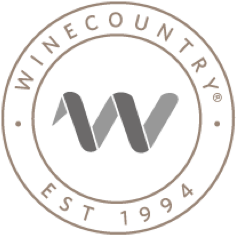- 89
- 0
Pinot Noir – If France is the Past, California is the Future
 Pinot Noir may be one grape, but it has developed two distinct personalities in this country.
They have as much to do with each other as a string quartet and heavy metal; both are music,
but one was designed to decorate the status quo and the other to shake it up. That’s how it
is with Pinot Noir in America.
Pinot Noir may be one grape, but it has developed two distinct personalities in this country.
They have as much to do with each other as a string quartet and heavy metal; both are music,
but one was designed to decorate the status quo and the other to shake it up. That’s how it
is with Pinot Noir in America. Until the 1990s, virtually all the Pinot Noir vines in America had all come from established French vineyards by one route or another. Not only that, winemakers generally went to Burgundy (where all red wine is Pinot Noir) to learn how to make it. Thus it’s no surprise that American Pinot Noir was a lot like the French kind: classically structured, beautifully nuanced, and built more to enchant than overpower. A string quartet in a bottle.
Then two revolutions occurred simultaneously and transformed Pinot Noir as we know it. First, the French themselves developed some new genetic mutations of Pinot Noir, designed to ripen earlier and to convey more color and tannin to the wine when they were fermented. Winemakers in Burgundy wanted these features because their short, rainy growing season makes it hard to get color and maturity in the grapes.
The effect of the Dijon clones in California, however, was like pumping the grape full of steroids. With little threat of rain and abundant sun even in supposedly “cool-climate” areas such as Anderson Valley and Sonoma Coast, California winemakers found that the new clones made their Pinot Noir super-ripe, super-dark, and packed with tannins (a natural component of grapes that adds texture, structure, and aging ability to wine). Most new Pinot Noir vineyards going in the ground in California are now planted mostly or entirely to Dijon clones. This is Revolution #1.
Revolution #2 is a fundamental shift in the wine business itself, which enables anyone to get into the game without owning land, buildings, or even equipment. If you can scrape up enough cash for grapes and a few barrels these days, you can borrow, rent, or share everything else — including the bond the government requires of people who make alcohol for sale.
Put the two revolutions together, and you get the perfect conditions for young, ambitious winemakers to make a big splash. They specialize in vineyard-designated wines from not-yet-established areas where grapes are cheap and growers are hungry for recognition. They convince their growers to practice extreme viticulture that results in small berries and high sugar levels (which translate to maximum tannin and high alcohol). They make their wines in urban industrial warehouses, often with borrowed, rented, or shared equipment. They splurge only on new oak barrels.
The resulting wine is bold, dark, and powerful — the vinous equivalent of power rock. “It’s a big, ripe, roasted style with plenty of sugar and fat — which for me has nothing to do with Burgundy,” says Stephen Tanzer, editor and publisher of International Wine Cellar.
I recently tasted nearly all the 2003 Pinot Noirs made in Anderson Valley, and it was clear that the region is now in the throes of America’s Pinot Noir culture clash. Two-thirds of the wines tasted of freshly picked red fruit with both sweet and sour qualities, such as raspberries and cranberries. These wines were medium-bodied, well-balanced and made long-time valley vintners nod approvingly. The other dozen or so wines tasted of cooked black fruit laced heavily with dark baking spices and toasted oak flavors. They were big, brawny wines that the younger winemakers at the tasting understood and appreciated immediately.
All the wines were well-made, so it’s not as if one style is superior to another. As with music, what you prefer is up to you. Just make sure you know which station you’re tuning into when you pull out your wallet.









